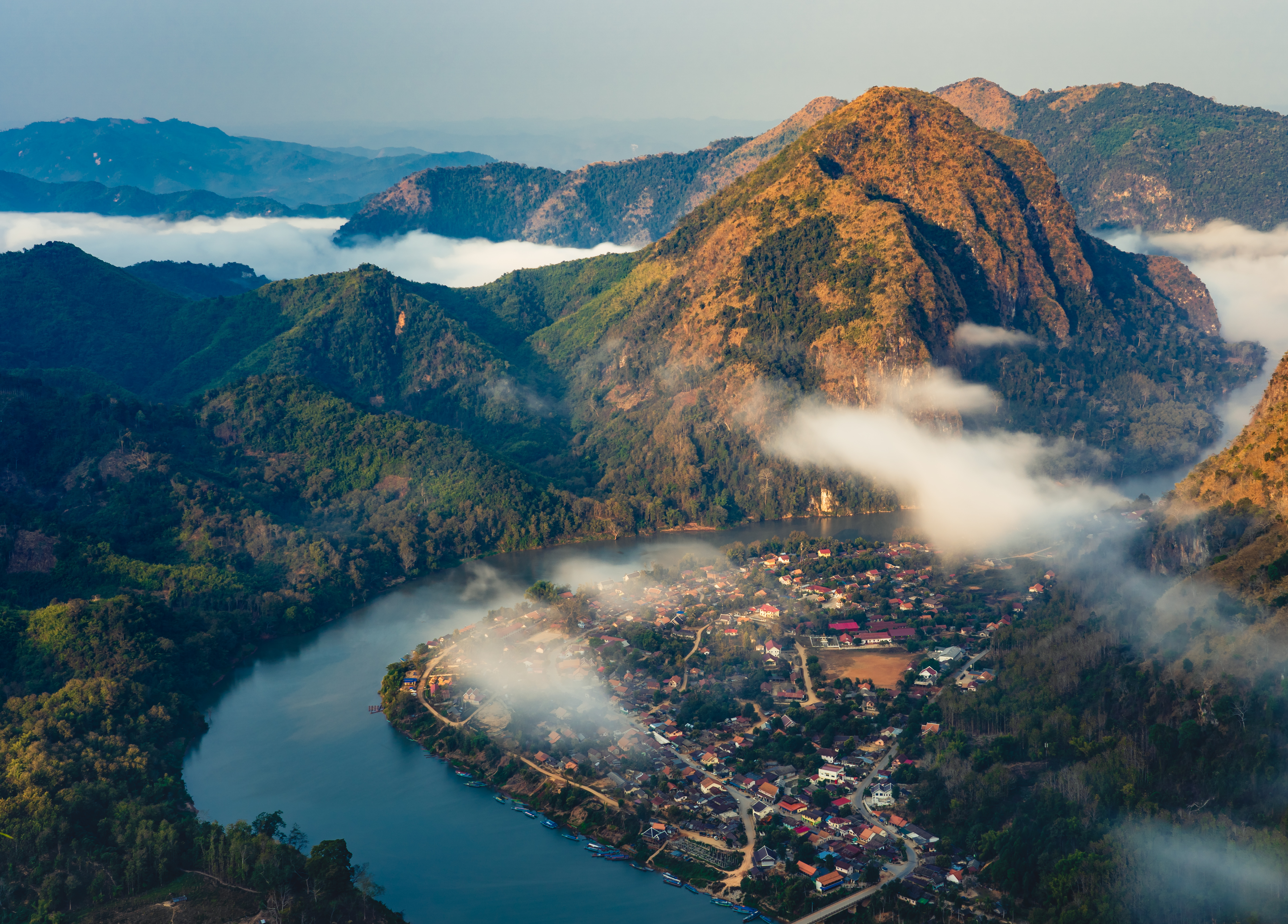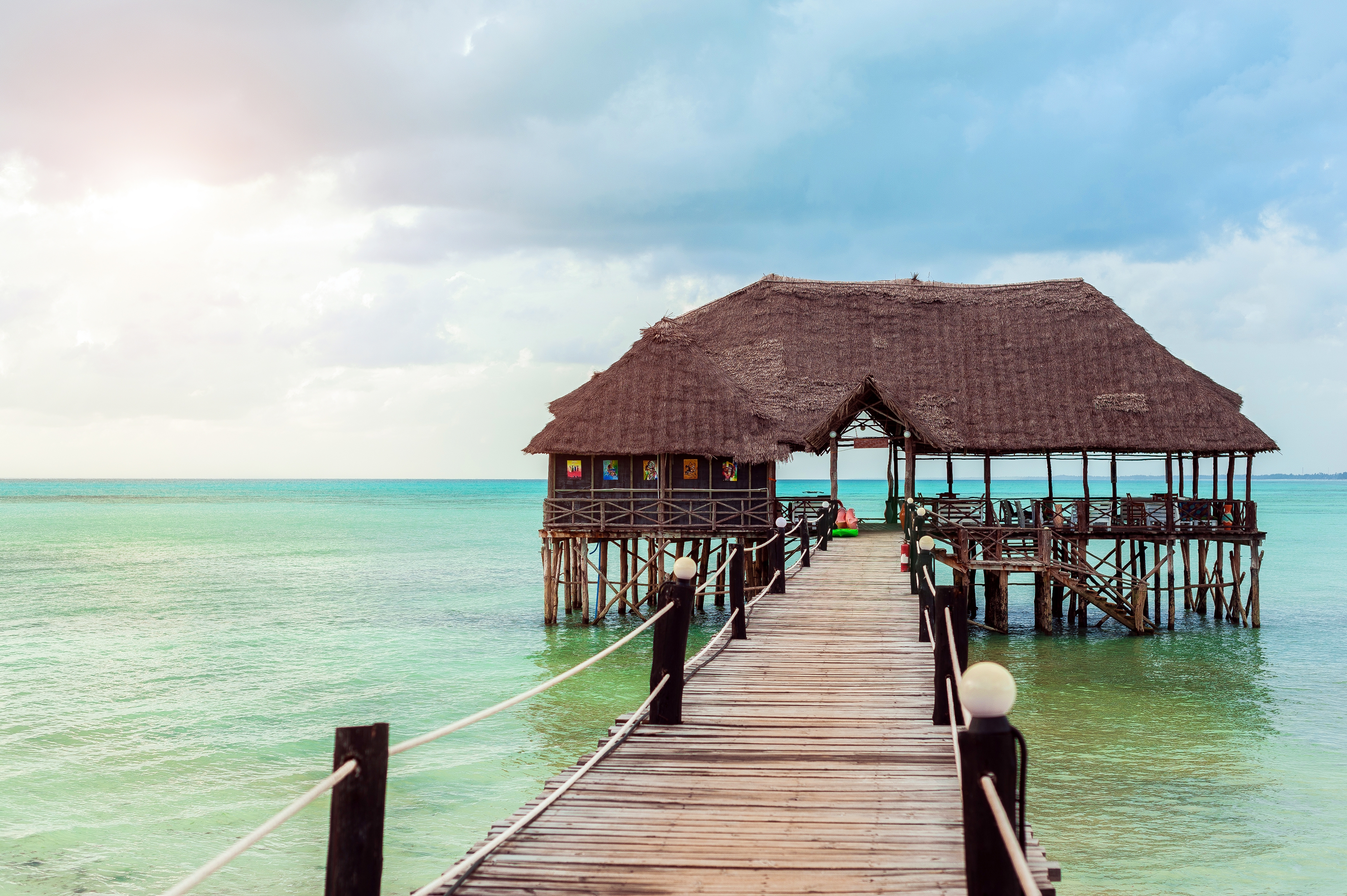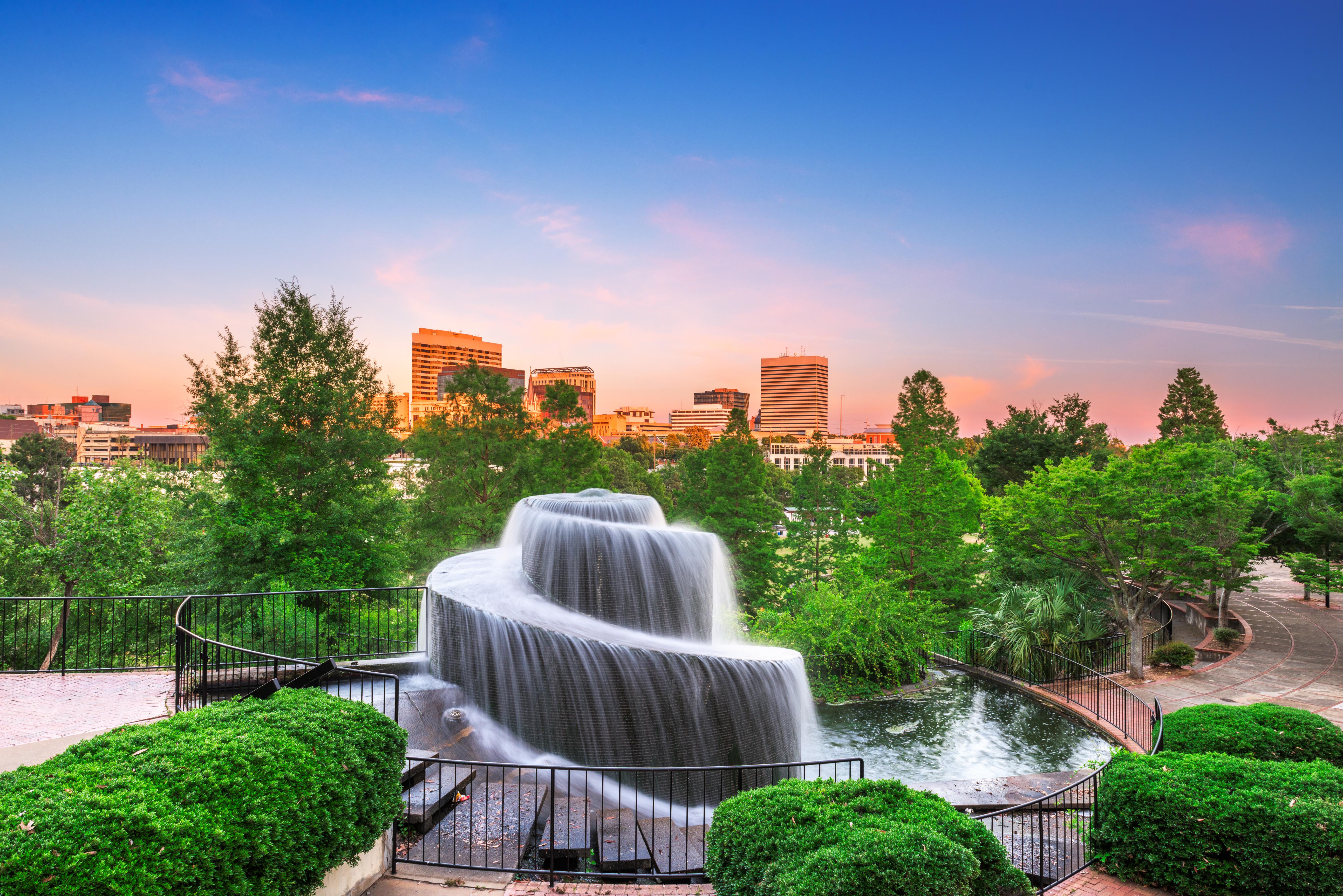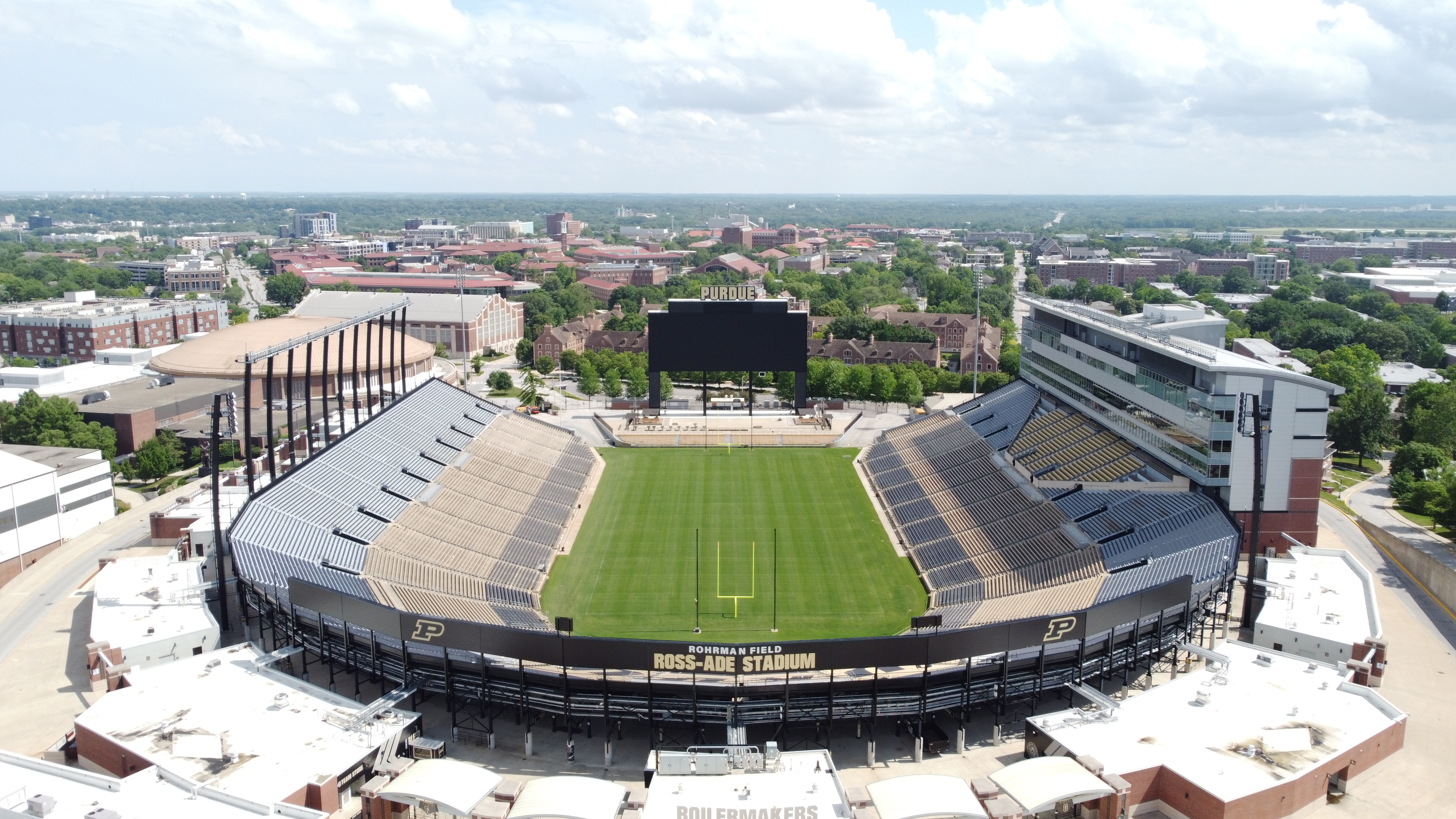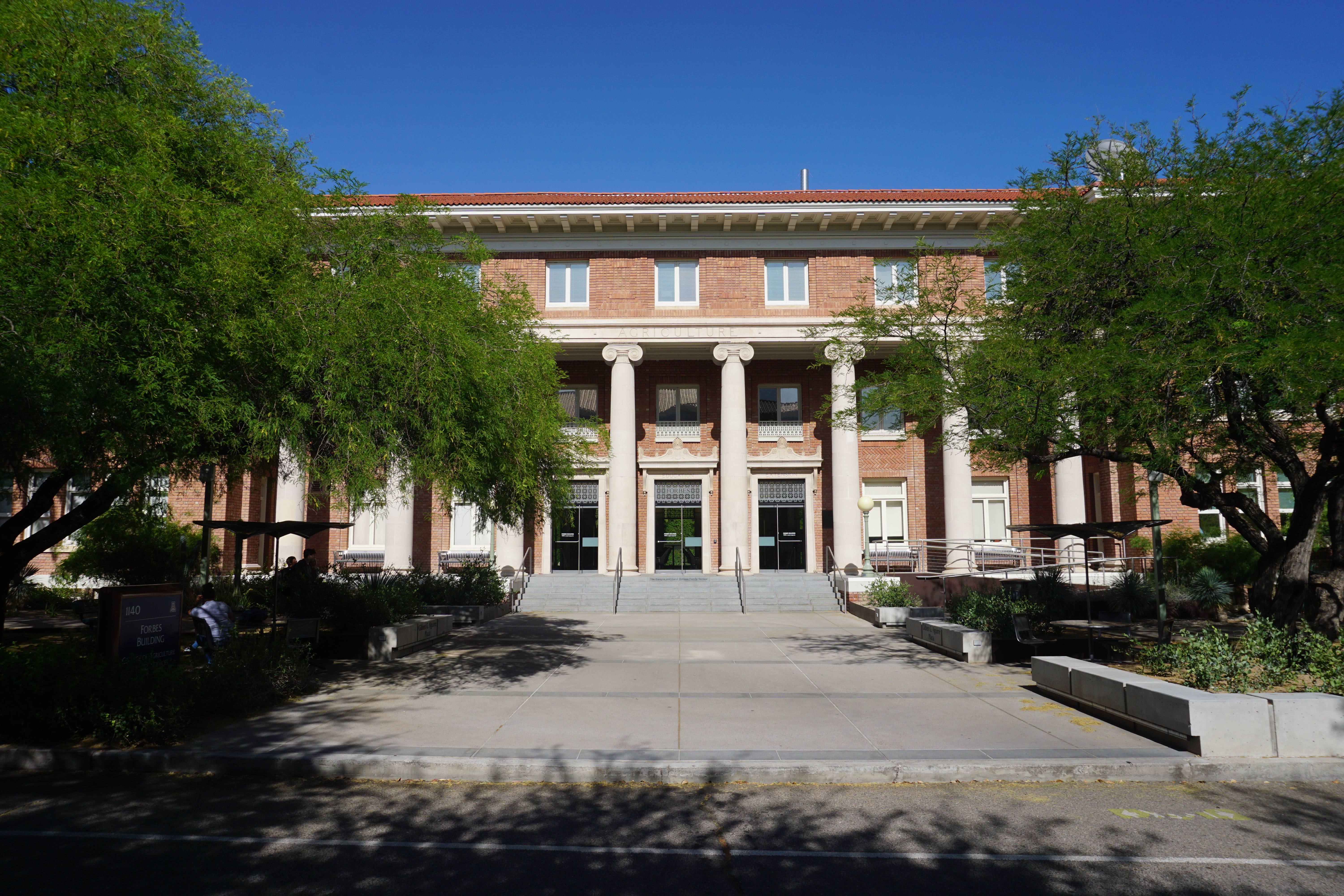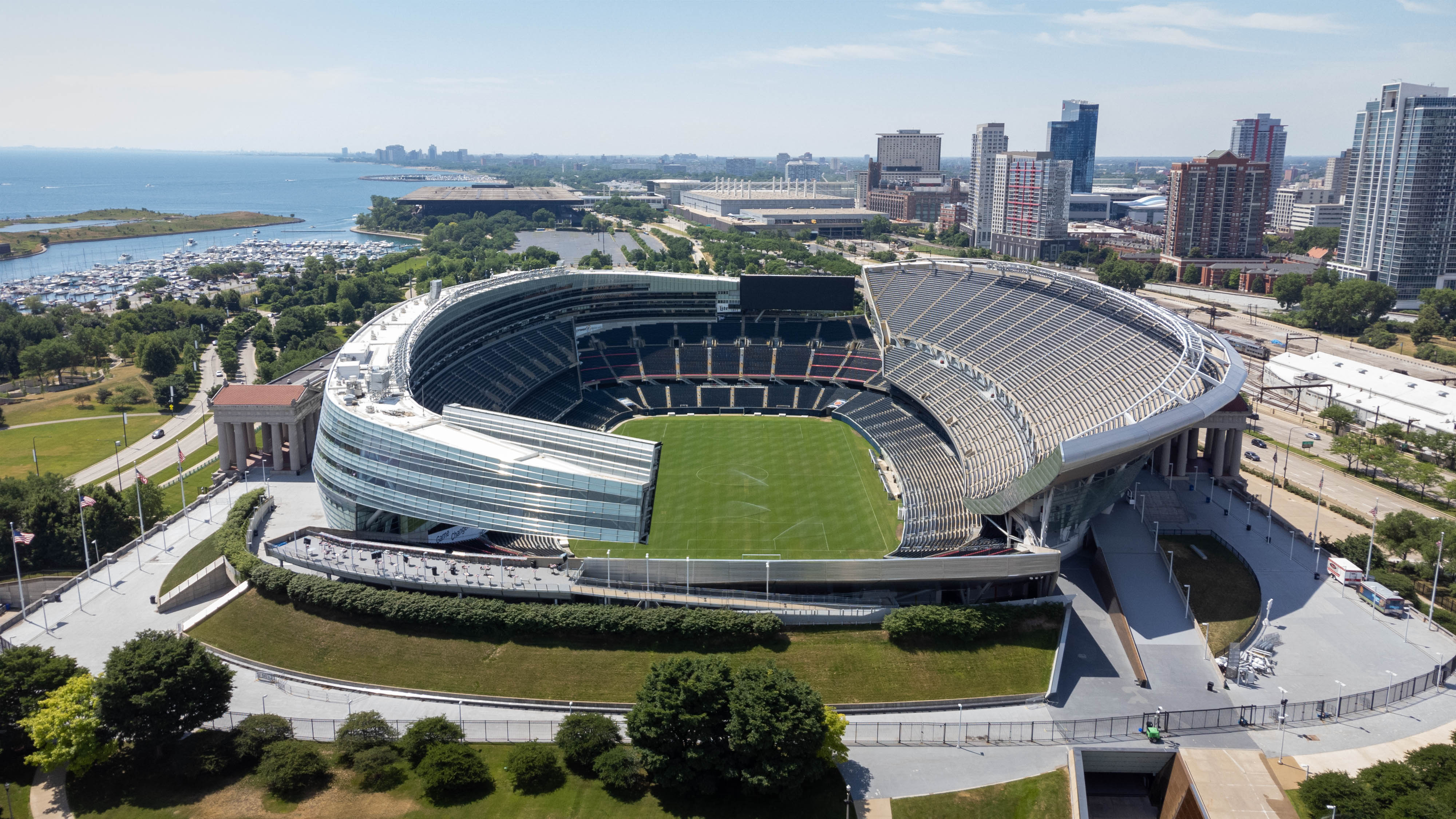The 15 Most Colorful Cities Around The World You'll Want To Visit
In a world where monotony often reigns, the allure of vibrant colors can be irresistibly captivating. Our journey begins with an exploration of the most colorful cities across the globe, each a tapestry of hues that tells its own story. These cities, from the sun-drenched streets of South America to the historic alleyways of Europe, invite travelers to immerse themselves in their vivid palettes. Their colors are not mere aesthetic choices but are deeply entwined with the cultural, historical, and social fabric of each location. This article will guide you through 15 of the world's most colorful cities, offering a glimpse into the unique charm and allure that make them must-visit destinations for any traveler seeking to add a splash of color to their life. As we delve into each city, we'll explore the history behind their vibrant facades, the cultural significance of their hues, and the experiences that await those who wander their streets. Prepare to embark on a journey that promises to be as enlightening as it is visually stunning.
1. Burano, Italy: A Kaleidoscope of Venetian Charm
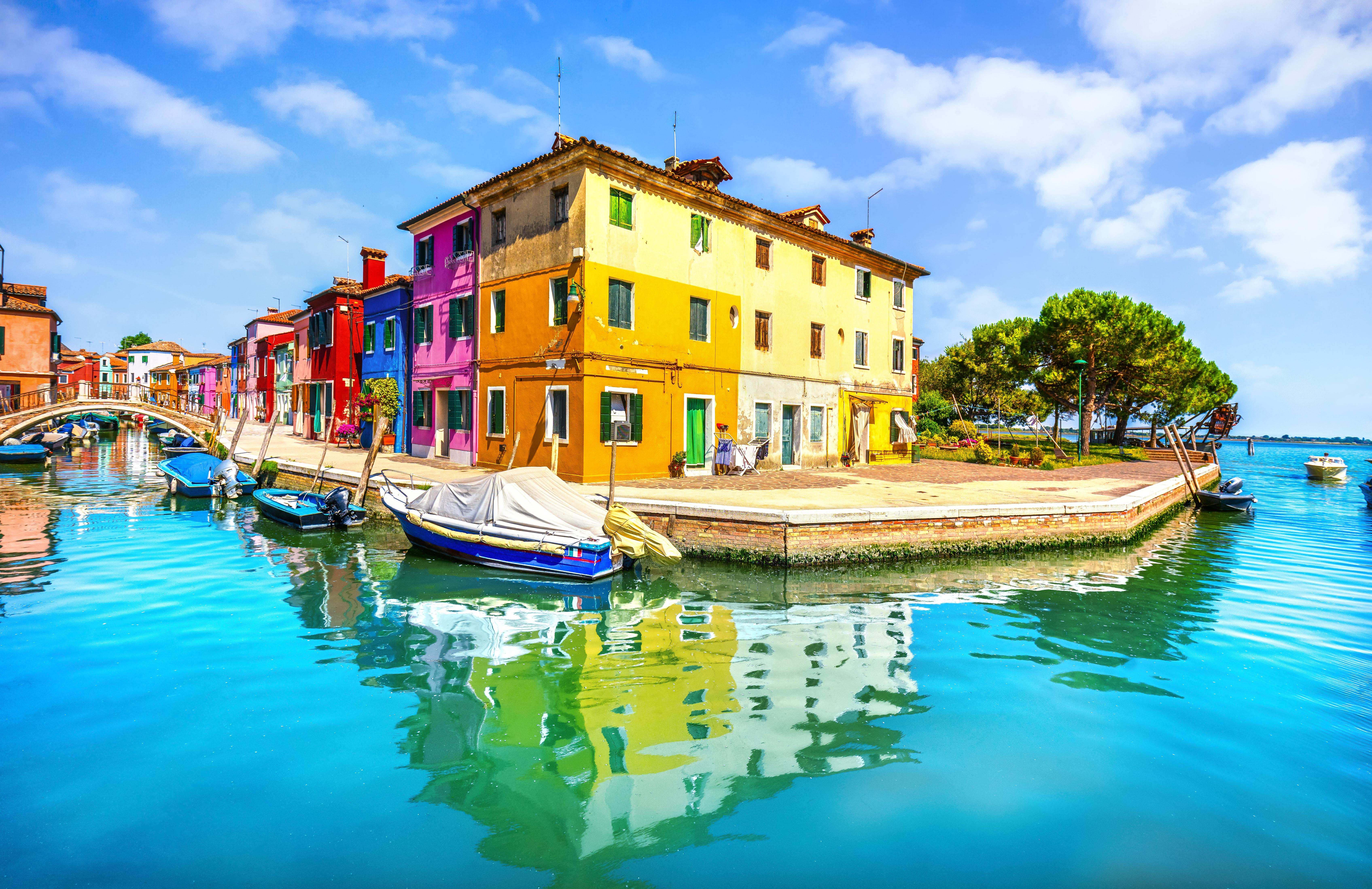
Nestled in the Venetian Lagoon, Burano is a small island that stands as a testament to the power of color. Known for its brightly painted houses, Burano's kaleidoscope of colors is said to have originated from fishermen who painted their homes in vivid hues to easily identify them from the sea. This tradition has been preserved through generations, and today, the island's color palette is regulated by the local government to maintain its unique charm. As you stroll through Burano's narrow streets, you'll encounter a symphony of colors that range from sunny yellows to deep blues, each telling a story of the island's rich history and vibrant culture. Beyond its visual allure, Burano is also renowned for its lace-making tradition, offering visitors a chance to witness artisans at work and purchase exquisite lace products. The island's culinary offerings, including fresh seafood and traditional Venetian dishes, further enhance the experience, making Burano a feast for both the eyes and the palate.
2. Chefchaouen, Morocco: The Blue Pearl of the Rif
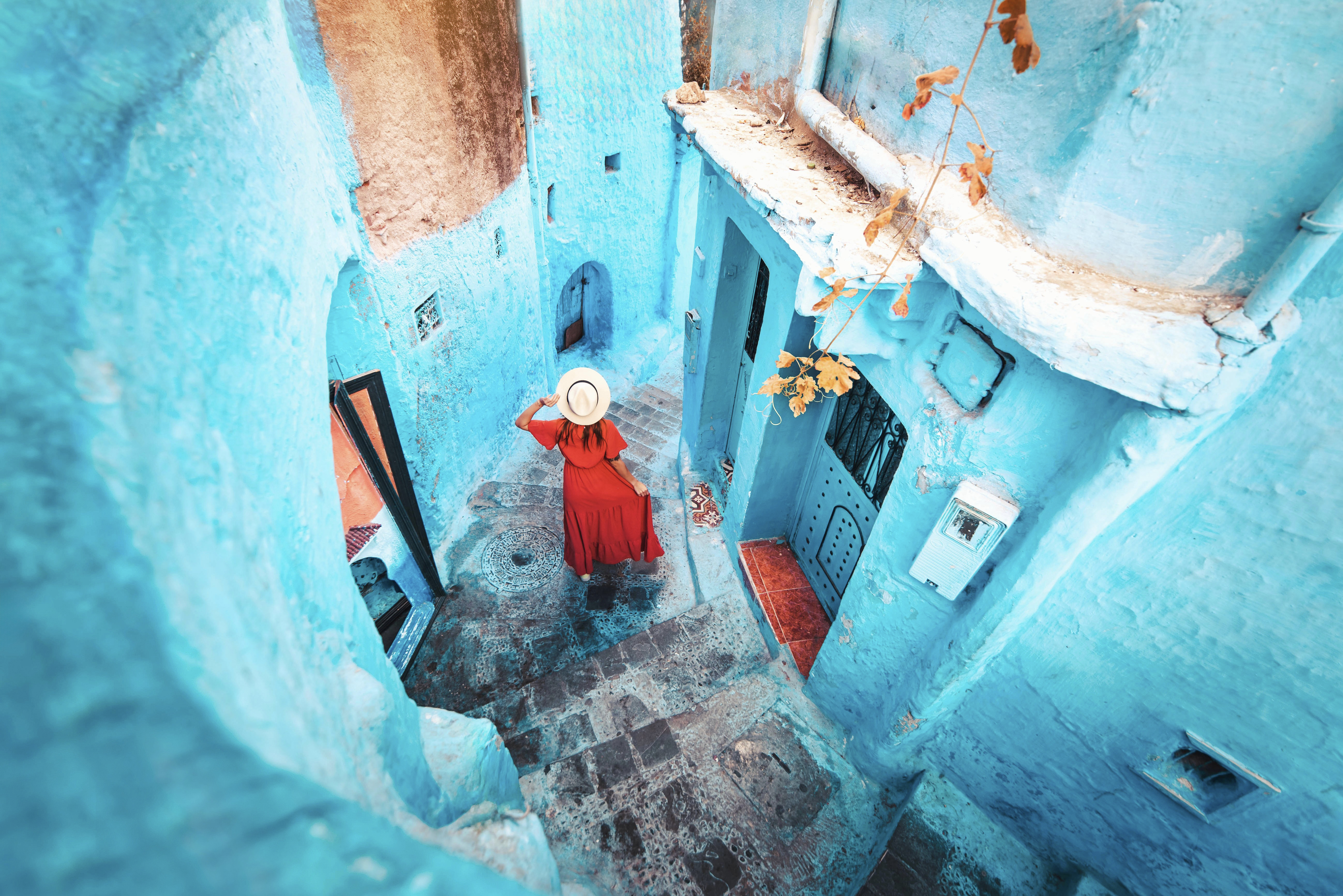
Perched in the Rif Mountains of Morocco, Chefchaouen is a city that enchants visitors with its striking blue-washed buildings. This "Blue Pearl" is steeped in mystery, with various theories about why its buildings are painted blue. Some believe the color wards off mosquitoes, while others suggest it symbolizes the sky or heaven, reflecting the city's Jewish heritage. Regardless of its origins, the blue hue creates a serene and calming atmosphere that envelops the city. Wandering through Chefchaouen's medina, you'll find a labyrinth of narrow alleyways, each corner revealing new shades of blue that shift with the changing light. The city's vibrant markets offer a sensory overload, with stalls brimming with colorful textiles, spices, and handicrafts. For those seeking adventure, the surrounding mountains provide ample opportunities for hiking and exploration, offering breathtaking views of the city and its azure landscape. Chefchaouen is a place where tradition and tranquility intertwine, inviting travelers to lose themselves in its enchanting embrace.
3. Jodhpur, India: The Blue City of Rajasthan
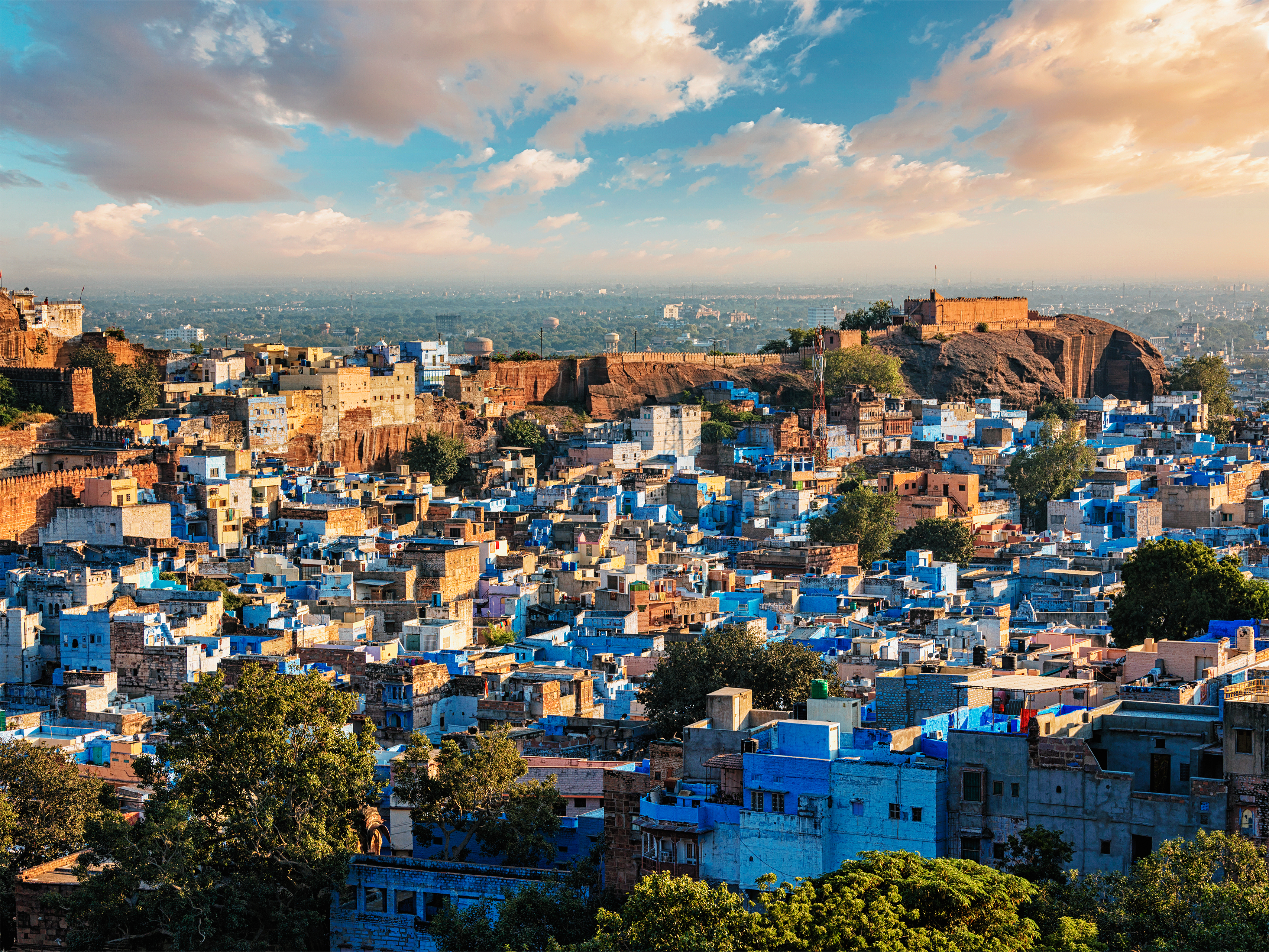
Known as the "Blue City," Jodhpur is a dazzling spectacle of indigo-hued houses set against the backdrop of the Thar Desert. This vibrant city in Rajasthan is dominated by the imposing Mehrangarh Fort, which offers panoramic views of the blue-tinted landscape below. The tradition of painting houses blue is believed to have started with the Brahmins, the priestly caste, who used the color to signify their homes. Over time, the practice spread to other residents, creating the city's iconic blue skyline. Jodhpur's bustling markets, filled with colorful textiles, jewelry, and spices, provide a glimpse into the region's rich cultural heritage. The city's culinary scene is equally vibrant, with an array of traditional Rajasthani dishes that tantalize the taste buds. Beyond its visual and cultural appeal, Jodhpur offers a range of experiences for travelers, from exploring ancient temples and palaces to embarking on desert safaris. In Jodhpur, the color blue is more than just a visual delight; it is a symbol of the city's enduring spirit and cultural legacy.
4. Guanajuato, Mexico: A Fiesta of Colors
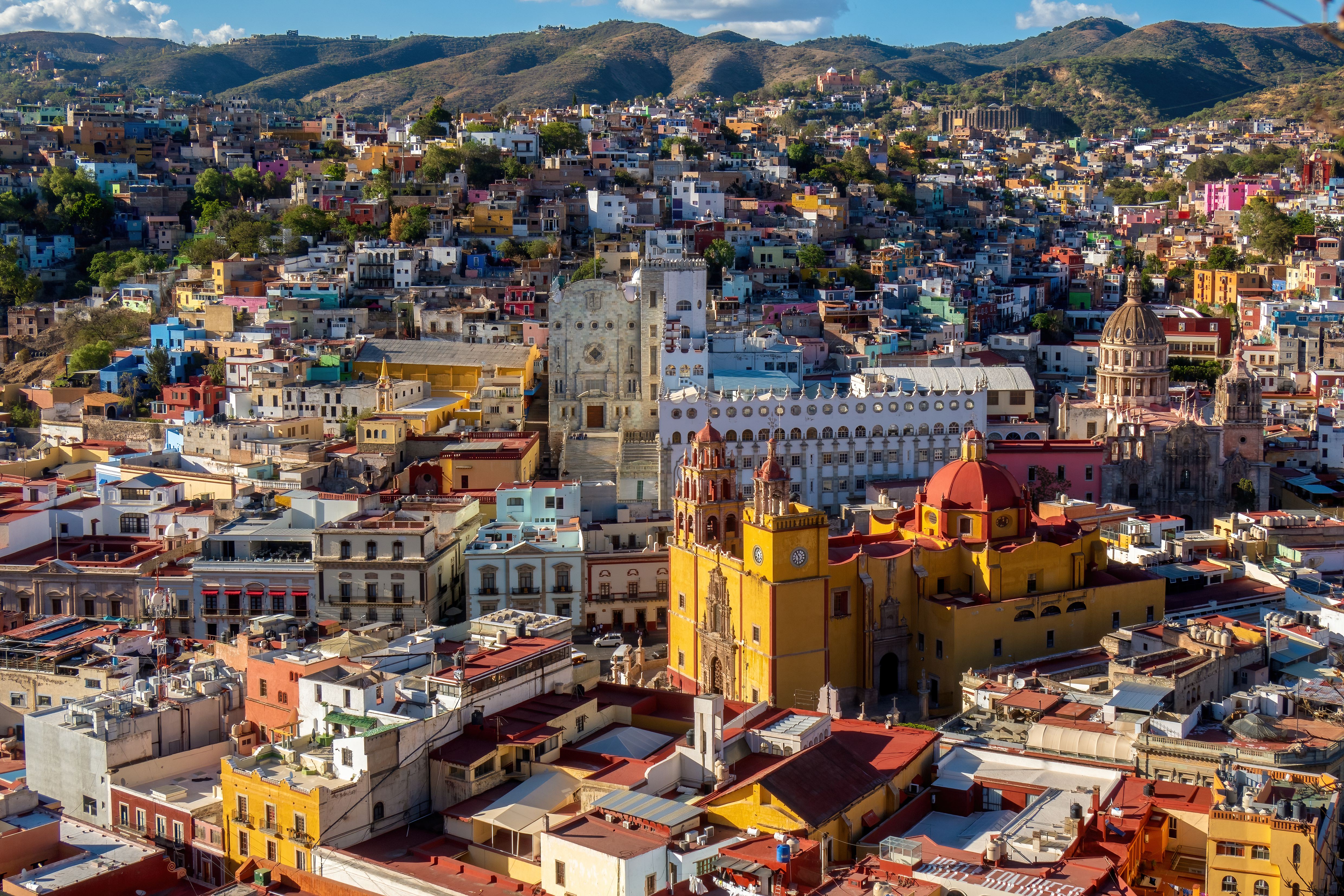
Guanajuato, a UNESCO World Heritage Site, is a city that bursts with color and history. Nestled in the mountains of central Mexico, Guanajuato's vibrant buildings cascade down steep hillsides, creating a picturesque scene that captivates visitors. The city's colorful architecture reflects its colonial past, with a blend of Spanish and indigenous influences. As you wander through Guanajuato's winding streets, you'll encounter a lively atmosphere, with mariachi bands playing in the plazas and street vendors selling traditional Mexican snacks. The city's rich cultural scene is highlighted by its numerous museums, theaters, and festivals, including the renowned Cervantino Festival, which celebrates the arts and draws performers from around the world. Guanajuato's culinary offerings are equally diverse, with a range of traditional Mexican dishes that showcase the region's unique flavors. From its vibrant colors to its rich cultural heritage, Guanajuato is a city that promises a fiesta for the senses.
5. Bo-Kaap, South Africa: A Rainbow of History
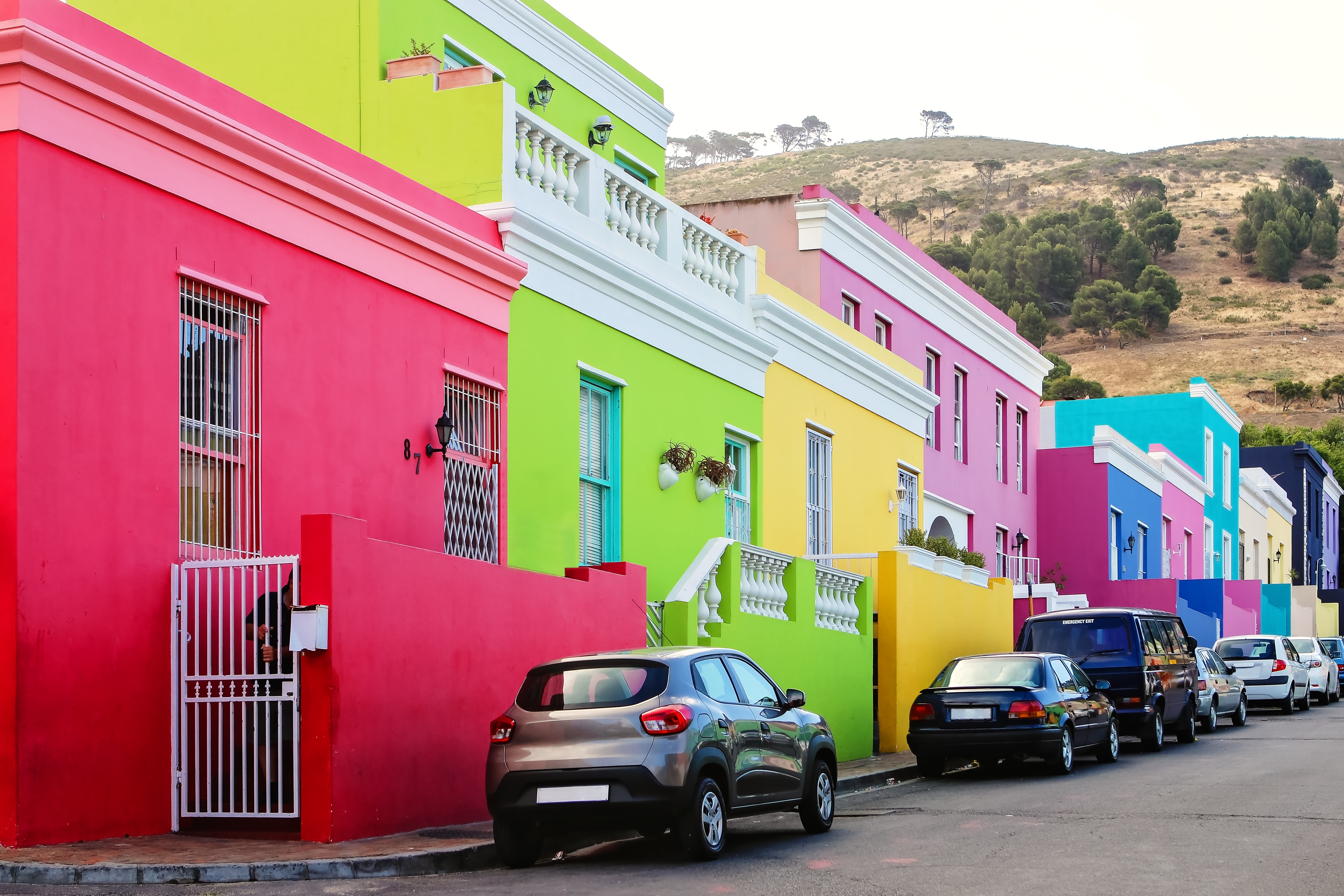
Bo-Kaap, a neighborhood in Cape Town, South Africa, is renowned for its brightly colored houses and rich cultural history. Originally known as the Malay Quarter, Bo-Kaap is a vibrant community that reflects the diverse heritage of its residents, many of whom are descendants of slaves brought to the Cape by the Dutch East India Company. The tradition of painting houses in vivid colors is believed to have started as a celebration of freedom, with each color representing the individuality and spirit of the community. Today, Bo-Kaap stands as a symbol of resilience and cultural pride, with its cobblestone streets and colorful facades attracting visitors from around the world. The neighborhood's rich culinary scene offers a taste of Cape Malay cuisine, with dishes that blend African, Asian, and European influences. Bo-Kaap's cultural significance is further highlighted by its museums and historic sites, which provide insight into the area's complex history and vibrant community life. In Bo-Kaap, color is more than just an aesthetic choice; it is a powerful expression of identity and heritage.
6. Valparaíso, Chile: A Canvas of Urban Art
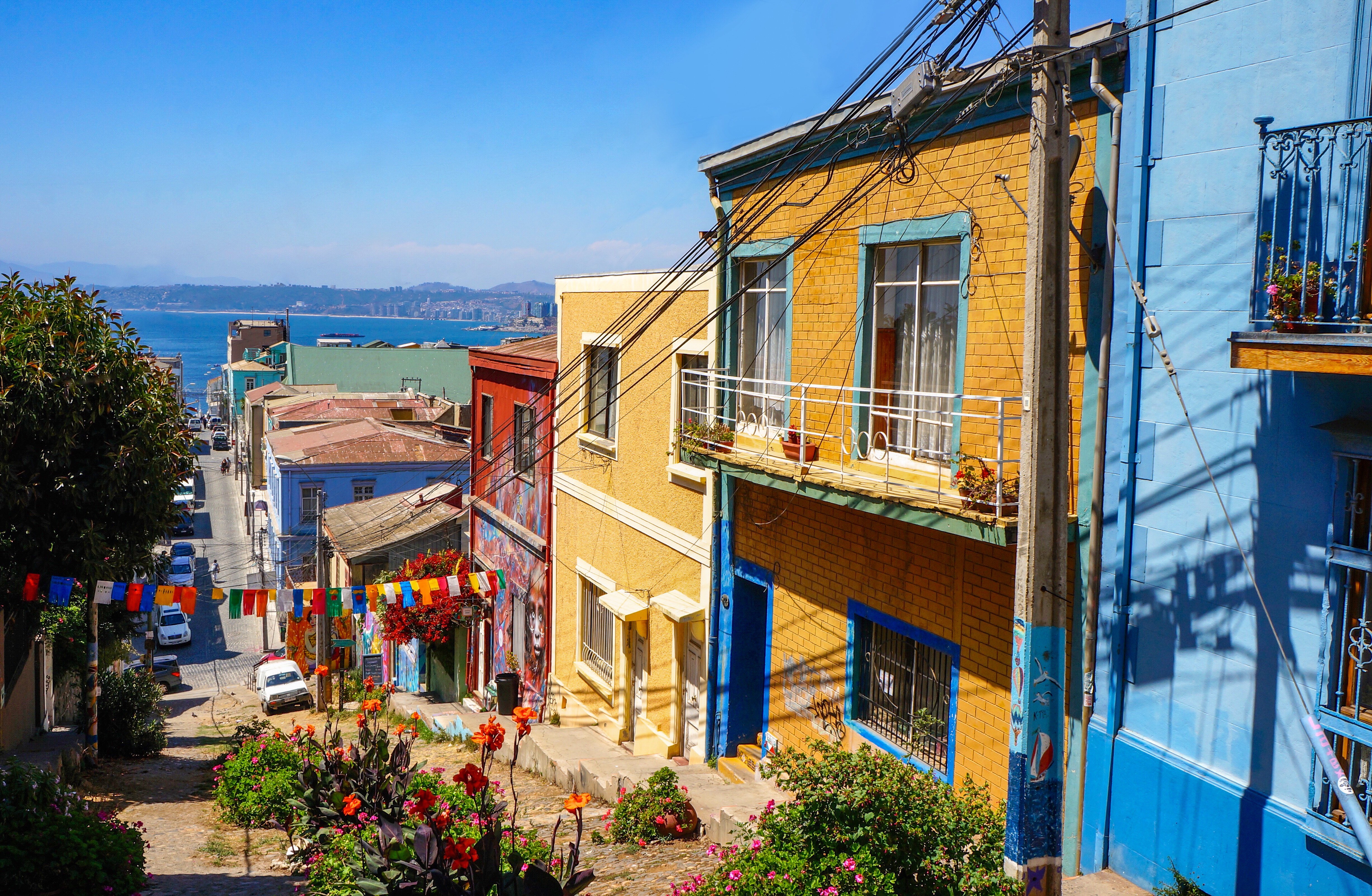
Valparaíso, a coastal city in Chile, is a vibrant tapestry of colors and creativity. Known for its steep hillsides and eclectic architecture, Valparaíso is a city that celebrates artistic expression in all its forms. The city's streets are adorned with vibrant murals and graffiti, transforming its urban landscape into a living canvas. This tradition of street art has deep roots in Valparaíso's history, with artists using walls as a medium for social and political commentary. As you explore the city's winding streets and staircases, you'll encounter a kaleidoscope of colors and styles, each piece telling a unique story. Valparaíso's artistic spirit extends beyond its street art, with numerous galleries, theaters, and cultural centers showcasing the work of local and international artists. The city's lively atmosphere is further enhanced by its bustling markets, vibrant nightlife, and diverse culinary scene, offering a taste of Chilean culture and cuisine. In Valparaíso, color is not just a visual experience; it is a celebration of creativity and community.
7. Willemstad, Curaçao: Caribbean Colors and Colonial Charm
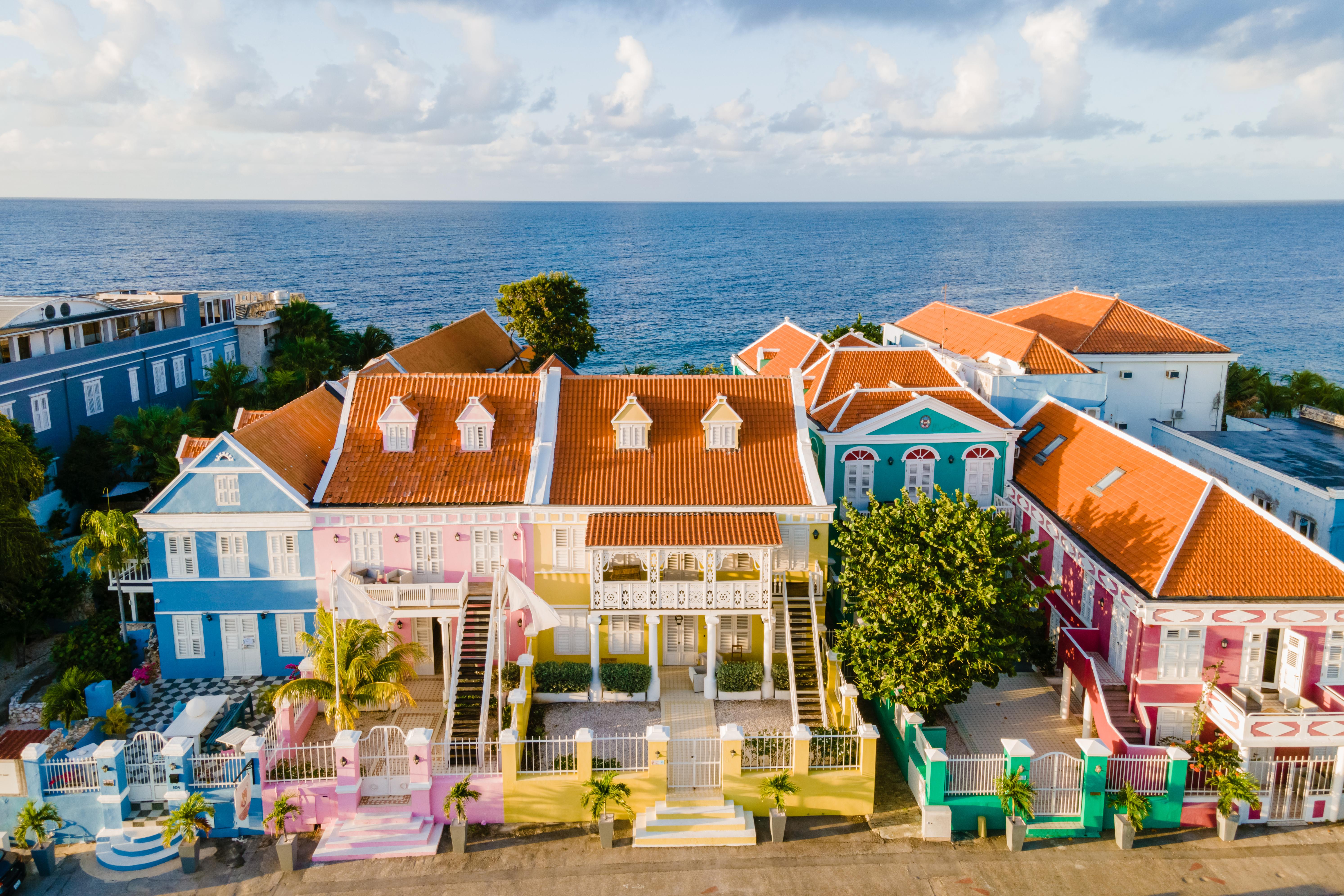
Willemstad, the capital of Curaçao, is a city that dazzles with its colorful colonial architecture and Caribbean charm. Located in the southern Caribbean Sea, Willemstad's historic city center is a UNESCO World Heritage Site, renowned for its pastel-colored buildings that line the waterfront. This vibrant palette is said to have originated in the 19th century when the governor, who suffered from migraines, ordered buildings to be painted in bright colors to reduce glare from the sun. Today, Willemstad's colorful facades are a defining feature of the city, attracting visitors from around the world. Beyond its visual appeal, Willemstad offers a rich cultural experience, with a blend of Dutch, African, and Caribbean influences reflected in its architecture, cuisine, and traditions. The city's lively markets, museums, and historic sites provide a glimpse into its diverse heritage, while its pristine beaches and crystal-clear waters offer a tropical paradise for relaxation and adventure. In Willemstad, color is a reflection of the island's vibrant spirit and cultural diversity.
8. Jaipur, India: The Pink City of Royal Splendor
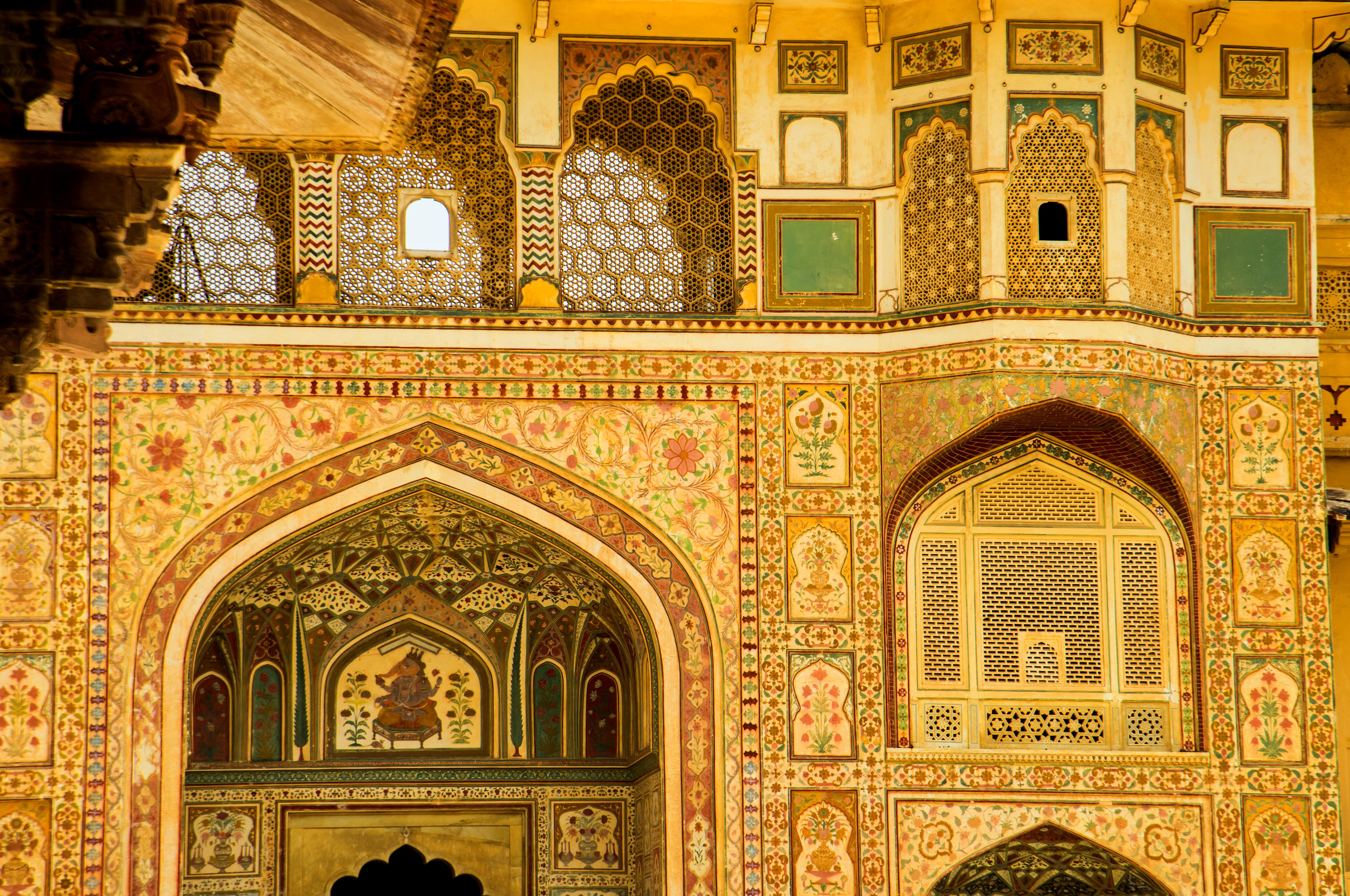
Jaipur, the capital of Rajasthan, is famously known as the "Pink City" due to its distinctive pink-hued buildings. This iconic color scheme dates back to 1876 when the city was painted pink to welcome the Prince of Wales, a gesture of hospitality that has since become a defining feature of Jaipur's identity. The city's architectural grandeur is evident in its palaces, forts, and temples, each adorned with intricate carvings and vibrant colors. Jaipur's bustling bazaars offer a sensory feast, with stalls selling everything from colorful textiles and jewelry to spices and handicrafts. The city's rich cultural heritage is celebrated through its numerous festivals and events, including the famous Jaipur Literature Festival, which draws writers and thinkers from around the world. Beyond its visual and cultural appeal, Jaipur offers a range of experiences for travelers, from exploring ancient forts and palaces to indulging in traditional Rajasthani cuisine. In Jaipur, the color pink is more than just a visual delight; it is a symbol of the city's royal legacy and warm hospitality.
9. La Boca, Buenos Aires: Tango and Technicolor
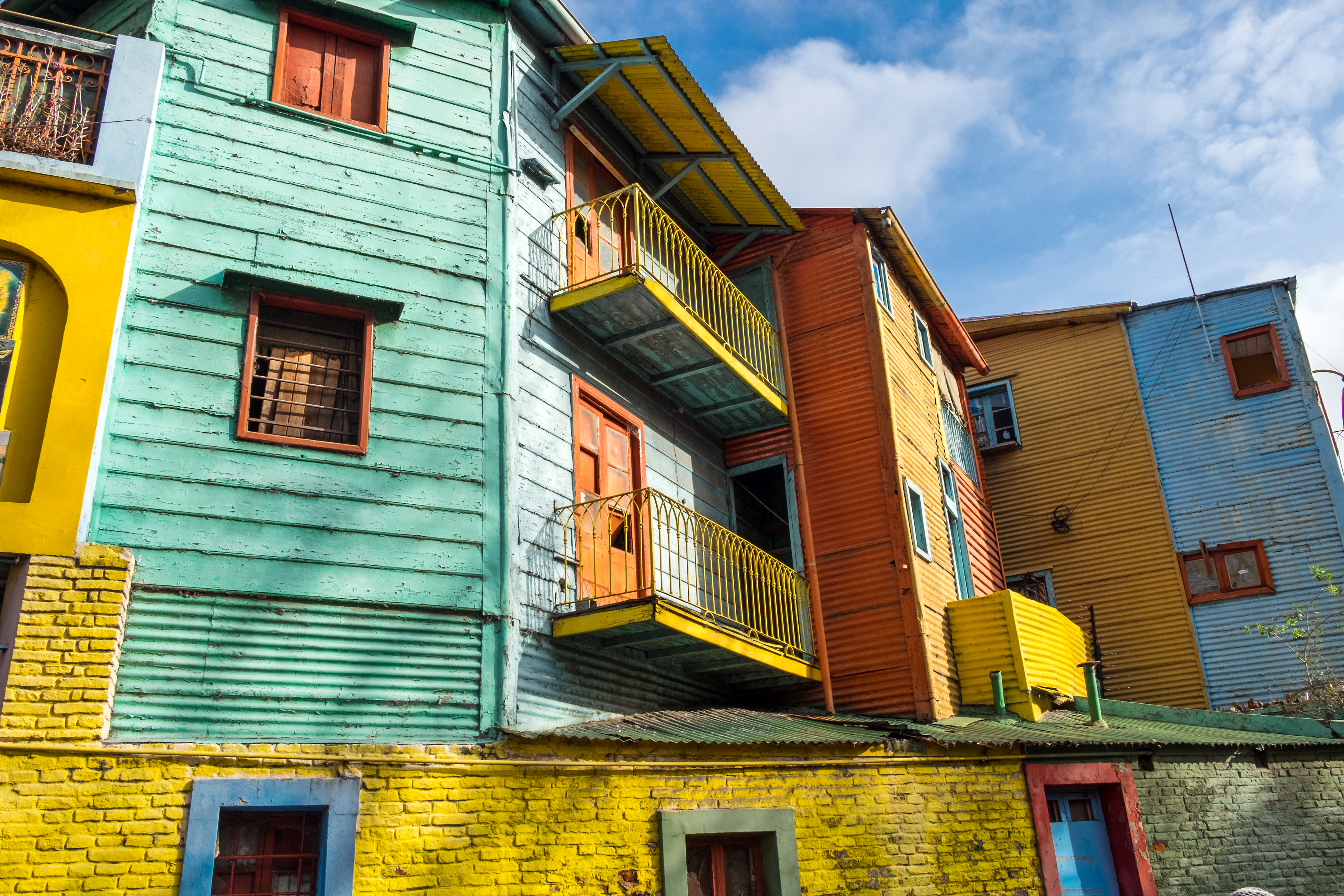
La Boca, a neighborhood in Buenos Aires, Argentina, is a vibrant explosion of color and culture. Known for its brightly painted buildings and lively atmosphere, La Boca is a place where art and tradition intertwine. The neighborhood's colorful facades are said to have originated from leftover paint used by shipyard workers, creating a patchwork of hues that has become a defining feature of La Boca's identity. As you wander through its streets, you'll encounter a lively scene of street performers, tango dancers, and artists showcasing their work. La Boca's cultural significance is further highlighted by its museums and galleries, which celebrate the neighborhood's rich artistic heritage. The famous Caminito Street is a must-visit, offering a glimpse into the area's vibrant history and artistic spirit. Beyond its visual appeal, La Boca offers a taste of Argentine culture, with traditional cuisine, music, and dance creating an unforgettable experience. In La Boca, color is a celebration of life, art, and community.
10. Izamal, Mexico: The Yellow City of Tranquility
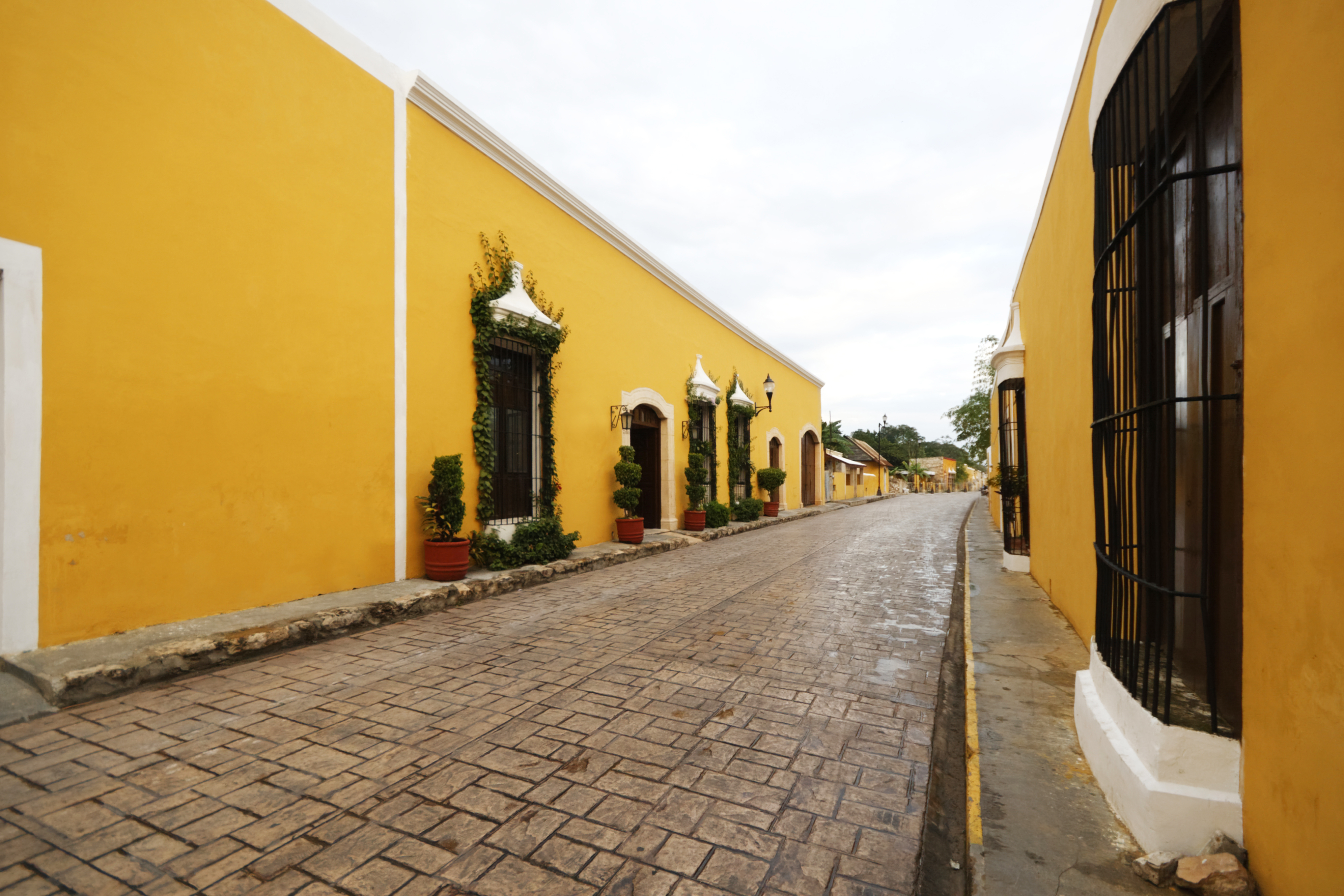
Izamal, a small town in Mexico's Yucatán Peninsula, is known as the "Yellow City" due to its striking yellow-painted buildings. This uniform color scheme is said to have been chosen in honor of Pope John Paul II's visit in 1993, creating a harmonious and tranquil atmosphere that envelops the town. Izamal's rich history is evident in its colonial architecture and ancient Mayan ruins, offering a unique blend of cultural influences. The town's centerpiece is the Convent of San Antonio de Padua, a stunning example of colonial architecture that stands as a testament to Izamal's religious heritage. As you explore Izamal's cobblestone streets, you'll encounter a peaceful ambiance, with local artisans selling handmade crafts and traditional Yucatecan dishes offering a taste of the region's culinary delights. Izamal's vibrant color and cultural significance make it a place of tranquility and reflection, inviting travelers to experience its unique charm and serene beauty.
11. St. John's, Canada: A Splash of Color in Newfoundland
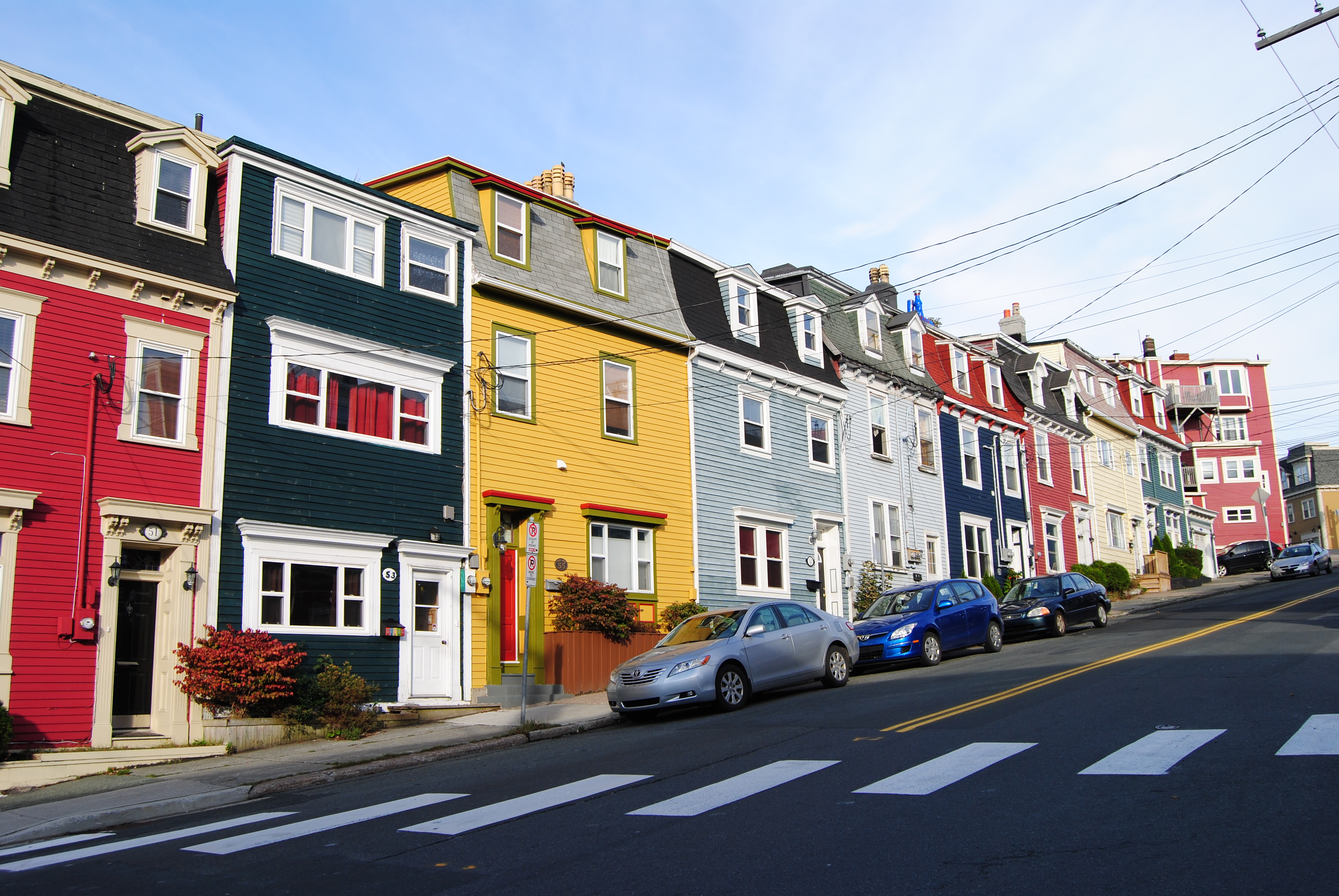
St. John's, the capital of Newfoundland and Labrador, is a city that stands out with its colorful row houses known as Jellybean Row. These brightly painted homes create a cheerful and welcoming atmosphere, adding a splash of color to the often foggy and overcast weather of the region. The tradition of painting houses in vibrant hues is believed to have started as a way for fishermen to easily identify their homes from the sea, a practice that has since become a defining feature of St. John's identity. Beyond its colorful facades, St. John's offers a rich cultural experience, with a blend of Irish, English, and Indigenous influences reflected in its music, cuisine, and traditions. The city's historic sites, museums, and lively arts scene provide a glimpse into its diverse heritage, while its stunning natural landscapes offer opportunities for outdoor adventure and exploration. In St. John's, color is a celebration of the city's vibrant spirit and cultural diversity.
12. Rio de Janeiro, Brazil: Favela Colors and Carnival Vibes
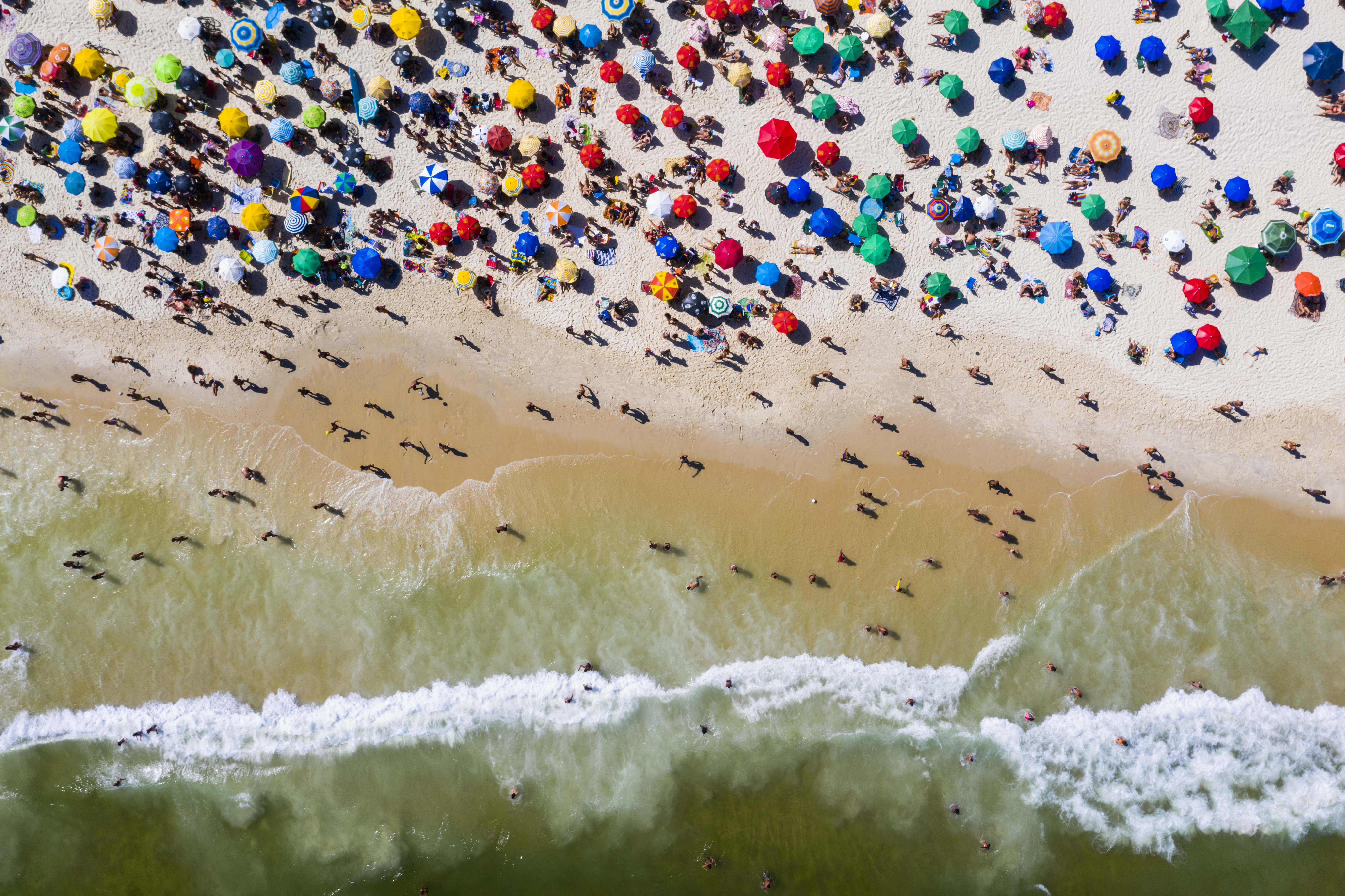
Rio de Janeiro, a city synonymous with color and celebration, is a place where vibrant hues and lively rhythms create an unforgettable experience. From the iconic beaches of Copacabana and Ipanema to the colorful favelas that dot the hillsides, Rio is a city that pulses with energy and life. The tradition of painting favelas in bright colors was initiated by artists and community leaders as a way to transform these neighborhoods into spaces of hope and creativity. This artistic movement has brought a new vibrancy to the city, attracting visitors from around the world. Rio's cultural scene is equally vibrant, with its famous Carnival celebration showcasing the city's rich traditions of music, dance, and costume. Beyond its visual and cultural appeal, Rio offers a range of experiences for travelers, from exploring historic sites and museums to indulging in Brazilian cuisine and enjoying the city's stunning natural landscapes. In Rio de Janeiro, color is a reflection of the city's joyful spirit and cultural richness.
13. San Francisco, USA: Painted Ladies and Rainbow Flags

San Francisco, a city known for its iconic landmarks and diverse culture, is a place where color plays a central role in its identity. The city's famous Painted Ladies, a row of Victorian houses painted in vibrant hues, are a testament to San Francisco's rich architectural heritage. These colorful homes, set against the backdrop of the city's modern skyline, create a striking visual contrast that has become a symbol of San Francisco's eclectic charm. Beyond its architectural beauty, San Francisco is renowned for its vibrant LGBTQ+ community, with the rainbow flag flying proudly in the Castro District. This celebration of diversity and inclusion is reflected in the city's numerous cultural events, festivals, and parades, which draw visitors from around the world. San Francisco's culinary scene is equally diverse, offering a taste of global flavors and innovative cuisine. In San Francisco, color is a celebration of the city's unique identity and vibrant spirit.
14. Havana, Cuba: Pastel Hues and Vintage Vibes
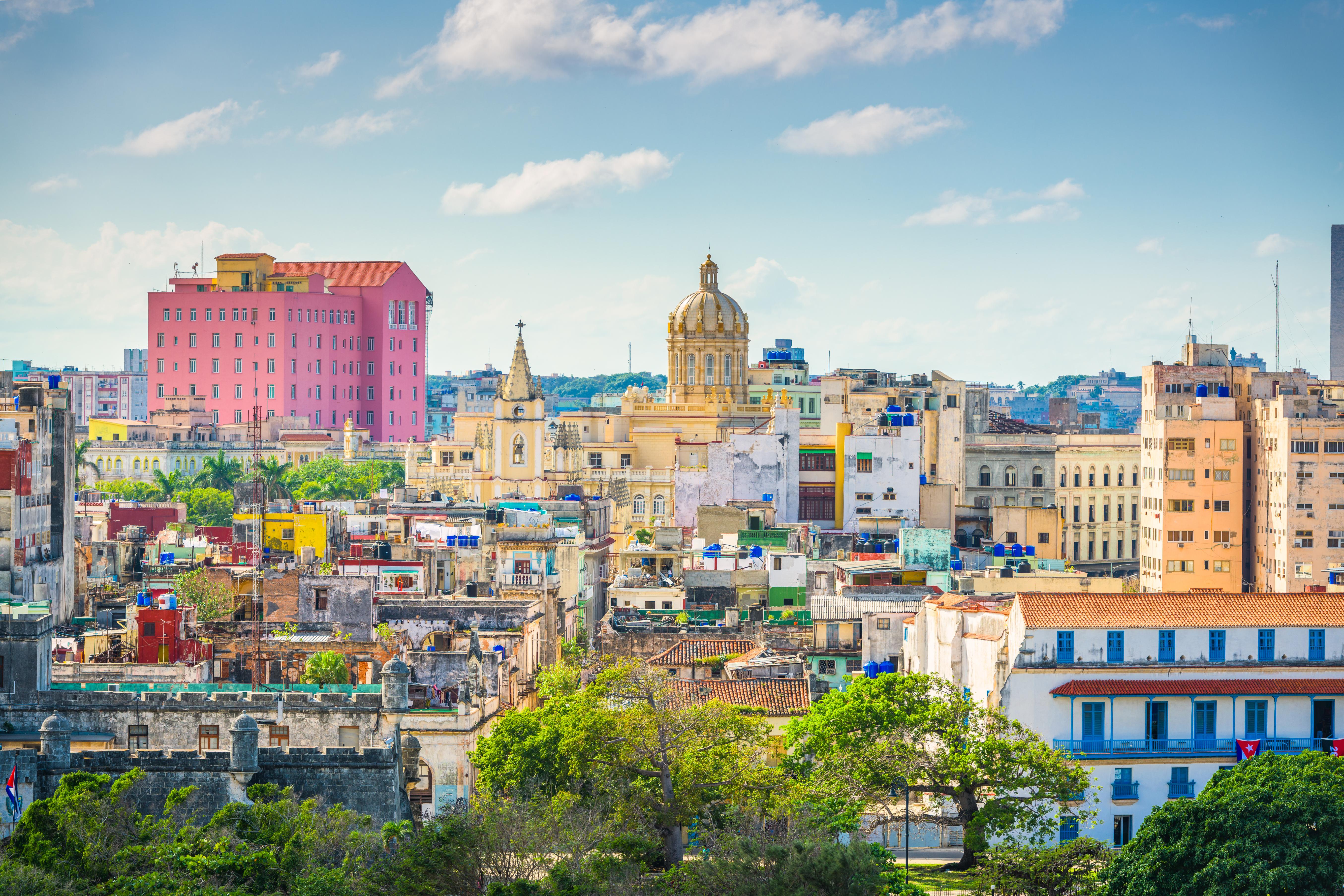
Havana, the capital of Cuba, is a city that captivates with its pastel-colored buildings and vintage charm. The city's historic architecture, with its faded facades and intricate details, tells a story of Havana's rich cultural heritage and colonial past. As you explore Havana's cobblestone streets, you'll encounter a vibrant atmosphere, with classic cars, lively music, and bustling markets creating a sense of nostalgia and excitement. The city's colorful buildings, ranging from soft pinks to bright yellows, reflect its unique blend of Spanish, African, and Caribbean influences. Havana's cultural scene is equally vibrant, with its renowned music and dance traditions offering a taste of Cuban culture. From its historic sites and museums to its lively nightlife and culinary delights, Havana is a city that invites travelers to immerse themselves in its colorful tapestry. In Havana, color is a reflection of the city's enduring spirit and cultural richness.
15. Santorini, Greece: A Symphony of Blue and White
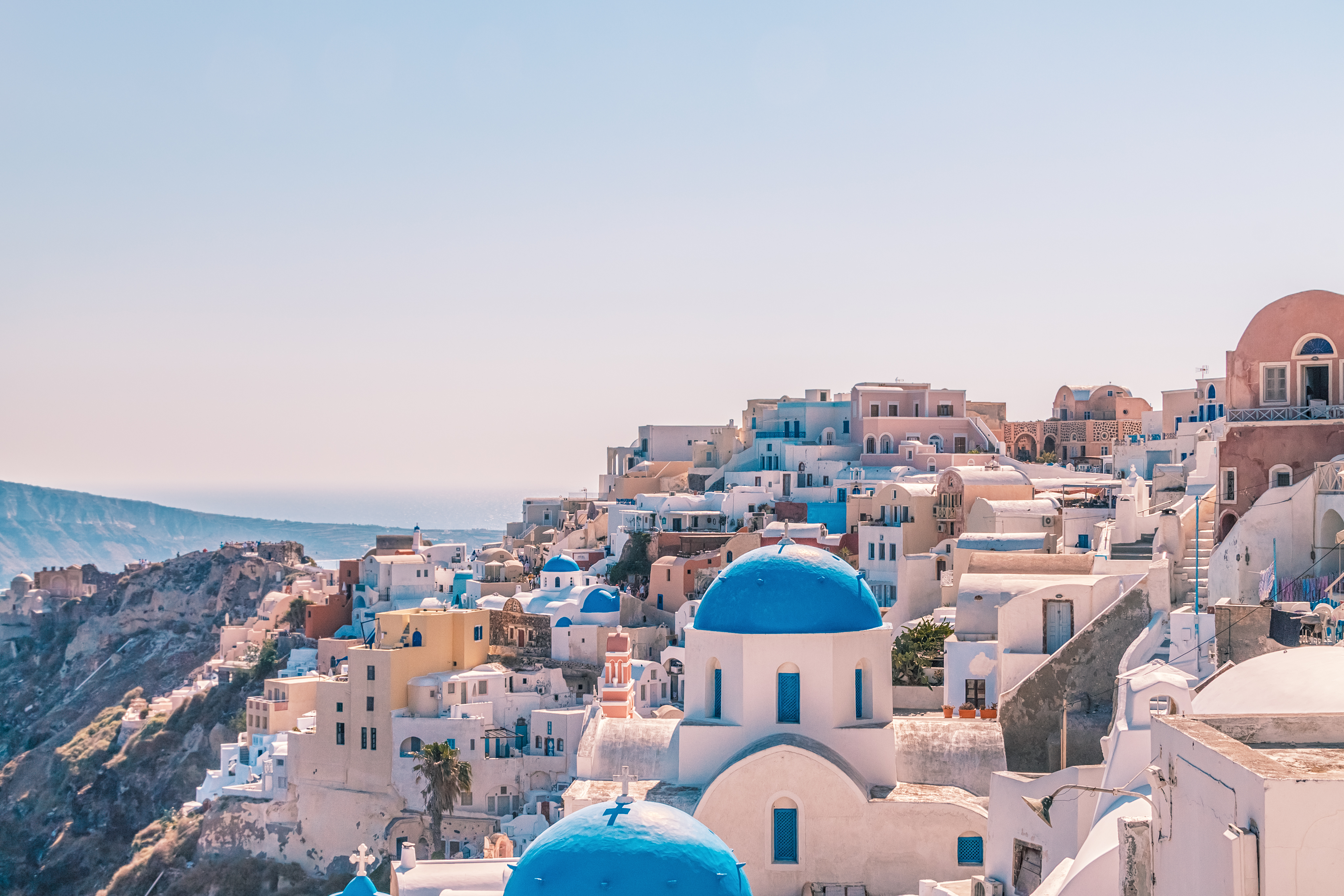
Santorini, a picturesque island in the Aegean Sea, is renowned for its stunning blue and white architecture that creates a striking contrast against the deep blue waters. This iconic color scheme, with its whitewashed buildings and blue-domed churches, is a defining feature of Santorini's identity, reflecting the island's traditional Cycladic architecture. As you wander through the narrow streets of towns like Oia and Fira, you'll encounter breathtaking views of the caldera and the surrounding sea, offering a sense of tranquility and wonder. Santorini's vibrant culture is reflected in its rich history, with ancient ruins, museums, and traditional festivals providing insight into the island's past. The island's culinary scene is equally captivating, with fresh seafood, local wines, and traditional Greek dishes offering a taste of Santorini's unique flavors. In Santorini, color is a celebration of the island's natural beauty and cultural heritage.
A World of Color Awaits
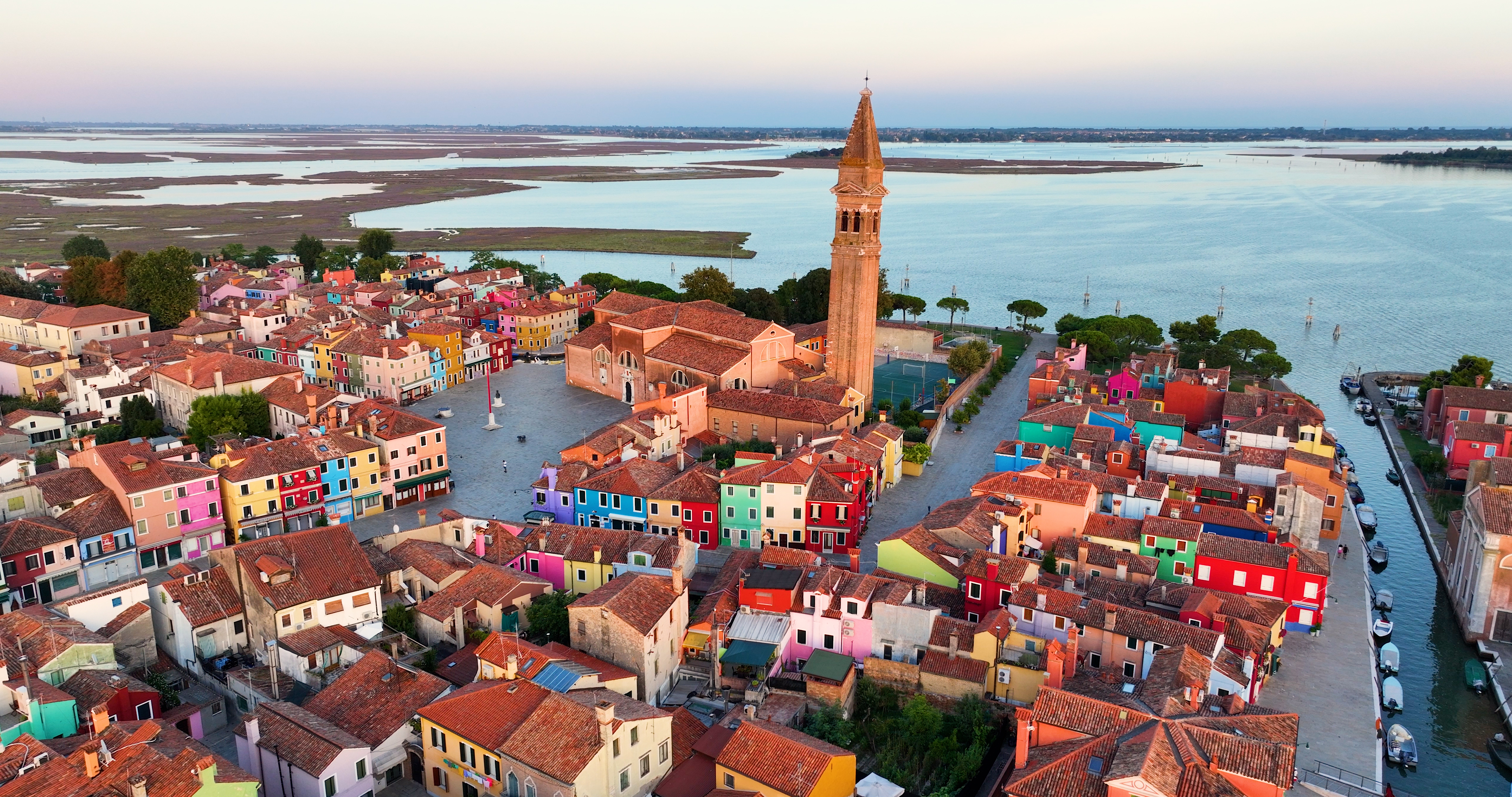
As our journey through the world's most colorful cities comes to an end, we are left with a deeper appreciation for the power of color to transform and inspire. Each city, with its unique palette and cultural significance, offers a glimpse into the diverse tapestry of human experience. From the tranquil blues of Chefchaouen to the vibrant hues of La Boca, these cities invite travelers to immerse themselves in their rich history and vibrant culture. Color, in all its forms, is a celebration of life, creativity, and community, offering a sense of connection and wonder. Whether you're drawn to the architectural beauty of Burano or the artistic spirit of Valparaíso, these colorful cities promise an unforgettable experience that will leave a lasting impression. So pack your bags, open your heart, and embark on a journey to discover the vivid tapestry of the world's most colorful cities. A world of color awaits, ready to inspire and enchant.

